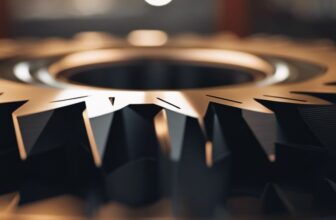As a woodworker, I love the satisfaction of completing intricate projects using quality joinery and fine details. The right circular saw blade is crucial for achieving clean, precise cuts on these types of pieces.
Through trial and error over the years, I’ve learned what to look for in a blade for fine woodworking.
Smaller Diameter Blade
While framing saws often take 7-1/4” blades, a smaller 6-1/2” or even 5-1/2” diameter allows for more controlled, slower cutting ideal for details. The smaller blade has less grab and torque too.
Higher Tooth Count
For plywood, veneers, and cross-cutting solid wood, use a blade with at least 60 teeth, or even 80+ for melamine or laminates. The fine tooth grind leaves an ultra-smooth edge behind.
Thin Kerf Saw Blade
Thinner blades around 1/8” reduce waste, cut faster, and require less power from your saw. Just ensure your saw’s arbor can accommodate thinner blade bodies before buying.
Alternate Top Bevel Grind
An ATB style triangular bevel tooth grind slices cleanly across wood grains. This leaves minimal tear-out compared to flat-top blades.
Carbide Tipped Teeth Saw Blade
Carbide teeth are crucial for furniture-grade cuts in plywood and hardwoods. They stay sharper much longer than standard steel teeth.
With the right combination blade and saw, you can break free from the shop saw to make fine finish cuts anywhere. Use these tips to select specialty blades for clean, tear-out free cuts.
Related posts









